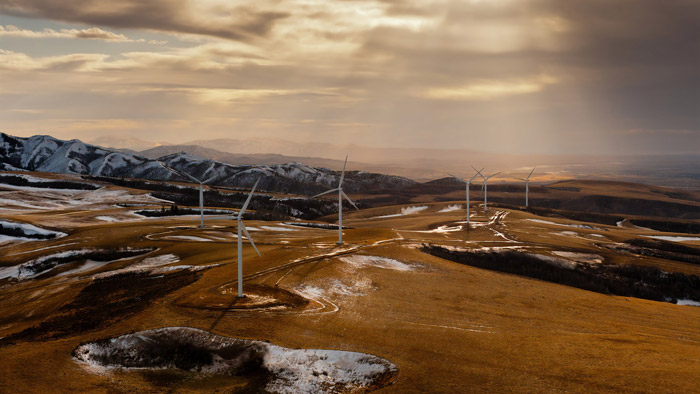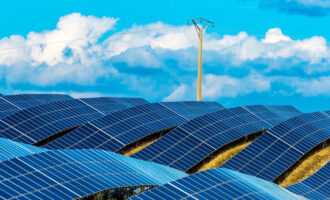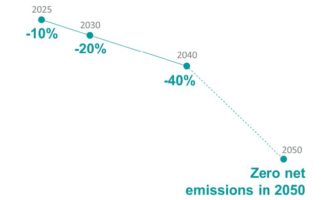
IRENA releases first Global Renewables Outlook
The International Renewable Energy Agency (IRENA) has released its first Global Renewables Outlook. The report shows the path to creating a sustainable future energy system. This flagship report highlights climate-safe investment options until 2050, the policy framework needed for the transition and the challenges faced by different regions.
This comprehensive analysis outlines the investments and technologies needed to decarbonise the energy system in line with the Paris Agreement. It also explores deeper decarbonisation options for the hardest sectors, aiming to eventually reduce carbon dioxide (CO2) emissions to zero.
Raising regional and country-level ambitions will be crucial to meet interlinked energy and climate objectives. The report presents findings on the specific transition prospects for 10 regions around the world. Comprehensive policies could tackle energy and climate goals alongside socio-economic challenges, fostering the transformative decarbonisation of societies.
Despite varied paths, all regions are expected to see higher shares of renewable energy use, with Southeast Asia, Latin America, the European Union and Sub-Saharan Africa poised to reach 70-80% shares in their total energy mixes by 2050.
Similarly, electrification of end uses like heat and transport would rise everywhere, exceeding 50% in East Asia, North America and much of Europe. All regions would also significantly increase their welfare and witness net job gains in the energy sector despite losses in fossil fuels. However, economy-wide, regional job gains are distributed unevenly. While regional GDP growth would show considerable variation, most regions could expect gains, according to the agency.
Among other findings:
- Energy-related CO2 emissions have risen by 1% per year on average since 2010. While the health crisis and oil price slump may suppress emissions in 2020, a rebound would restore the long-term trend.
- The transition to renewables, efficiency and electrification can drive broad socio-economic development. The outlook’s Transforming Energy Scenario aligns energy investments with the need to keep global warming “well below 2°C”, in line with the Paris Agreement.
- The last portion of CO2 emissions will be the hardest and most expensive to eliminate. The outlook’s Deeper Decarbonisation Perspective highlights the need for innovative technologies, business models and behavioural adaptation to reach zero emissions.
- Decarbonising energy use in time to avert catastrophic climate change requires intensified international co-operation. With the need for emission reductions unchanged, clean energy investments can safeguard against short-sighted decisions and the accumulation of stranded assets.
- Recovery measures following the COVID-19 pandemic could include flexible power grids, efficiency solutions, electric vehicle charging, energy storage, interconnected hydropower, green hydrogen and other technology investments consistent with long-term energy and climate sustainability.
The pathway to deeper decarbonisation requires a total energy investment up to USD130 trillion, the agency says.
Transforming the energy system could boost cumulative global GDP (gross domestic product) gains above business-as-usual by USD98 trillion between now and 2050, according to IRENA. It would nearly quadruple renewable energy jobs to 42 million, expand employment in energy efficiency to 21 million and add 15 million in system flexibility.
IRENA’s Director-General Francesco La Camera said: “Governments are facing a difficult task of bringing the health emergency under control while introducing major stimulus and recovery measures. The crisis has exposed deeply embedded vulnerabilities of the current system. IRENA’s outlook shows the ways to build more sustainable, equitable and resilient economies by aligning short-term recovery efforts with the medium-and long-term objectives of the Paris Agreement and the UN Sustainable Development Agenda.”
“By accelerating renewables and making the energy transition an integral part of the wider recovery, governments can achieve multiple economic and social objectives in the pursuit of a resilient future that leaves nobody behind.”
The Global Renewables Outlook examines building blocks of an energy system along with investment strategies and policy frameworks needed to manage the transition. It explores ways to reduce global CO2 emissions by at least 70% by 2050. Furthermore, a new perspective on deeper decarbonisation shows a path towards net-zero and zero emissions. Building on five technology pillars, particularly green hydrogen and extended end-use electrification could help replace fossil-fuels and slash emissions in heavy industry and hard-to-decarbonise sectors.
Low-carbon investment would significantly pay off, the agency says, with savings eight times more than costs when accounting for reduced health and environmental externalities. A climate-safe path would require cumulative energy investments of USD110 trillion by 2050 but achieving full carbon neutrality would add another USD20 trillion.









